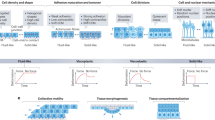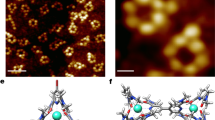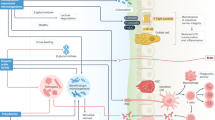Abstract
To study new trace element deficiency diseases and to identify hitherto unrecognized essential trace elements, an all-plastic trace element controlled isolator system has been created1,2. It prevents access of the animals to metal, glass, rubber, dust, or caretaking personnel. Each isolator accommodates thirtytwo rats in individual plastic cages. Complete, chemically defined diets are used which are based on amino-acids in lieu of protein. The known essential elements are supplied in sufficient and balanced quantities. All ingredients are monitored for trace element contaminants. By means of this approach we have been able to demonstrate recently that tin3,4, vanadium5, and fluorine6 (K. S. and D. B. M., unpublished results) are essential for growth.
This is a preview of subscription content, access via your institution
Access options
Subscribe to this journal
Receive 51 print issues and online access
$199.00 per year
only $3.90 per issue
Buy this article
- Purchase on Springer Link
- Instant access to full article PDF
Prices may be subject to local taxes which are calculated during checkout
Similar content being viewed by others
References
Schwarz, K., and Smith, J. C., J. Nutr., 93, 182 (1967).
Schwarz, K., in Trace Element Metabolism in Animals (edit. by Mills, C. F.), 25 (Livingstone, Edinburgh, 1970).
Schwarz, K., Milne, D. B., and Vinyard, E., Biochem. Biophys. Res. Commun., 40, 22 (1970).
Schwarz, K., in Newer Trace Elements in Nutrition (edit. by Mertz, W., and Cornatzer, W. E.), 313 (Dekker, New York, 1971).
Schwarz, K., and Milne, D. B., Science, 174, 426 (1971).
King, E. J., Biochem. J., 33, 944 (1939).
McGavack, T. H., Leslie, J. G., and Tang Kao, K., Proc. Soc. Exp. Biol. Med., 110, 215 (1962).
Milne, D. B., Schwarz, K., and Sognnaes, R., Fed. Proc., 31, 700 (1972).
Carlisle, E. M., Science, 167, 279 (1970).
Carlisle, E. M., Fed. Proc., 31, 700 (1972).
Author information
Authors and Affiliations
Rights and permissions
About this article
Cite this article
SCHWARZ, K., MILNE, D. Growth-promoting Effects of Silicon in Rats. Nature 239, 333–334 (1972). https://doi.org/10.1038/239333a0
Received:
Issue Date:
DOI: https://doi.org/10.1038/239333a0
This article is cited by
-
3D-printed PCL@BG scaffold integrated with SDF-1α-loaded hydrogel for enhancing local treatment of bone defects
Journal of Biological Engineering (2024)
-
Experimental Silica-based Bioceramic Composite Added with Nano-sized Bovine Hydroxyapatite: Synthesis and Characterization
Silicon (2023)
-
Total as Well as Bioaccessible Silicon profile in Commonly Available Feedstuffs for Livestock Feeding in Tropical Condition
Silicon (2023)
-
High-temperature phase transformations of hydroxylapatite and the formation of silicocarnotite in the hydroxylapatite–quartz–lime system studied in situ and in operando by Raman spectroscopy
Journal of Materials Science (2022)
-
Recent advances in silicate-based crystalline bioceramics for orthopedic applications: a review
Journal of Materials Science (2022)
Comments
By submitting a comment you agree to abide by our Terms and Community Guidelines. If you find something abusive or that does not comply with our terms or guidelines please flag it as inappropriate.



